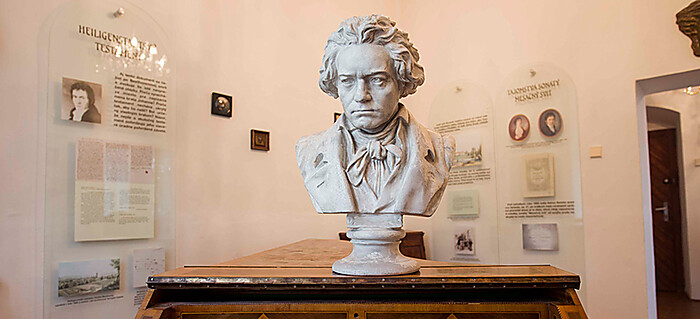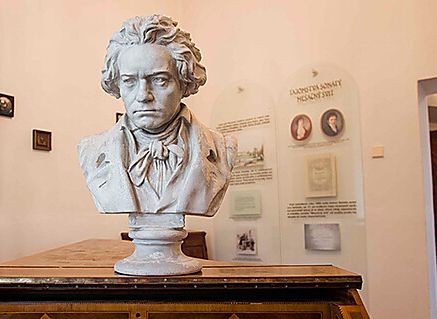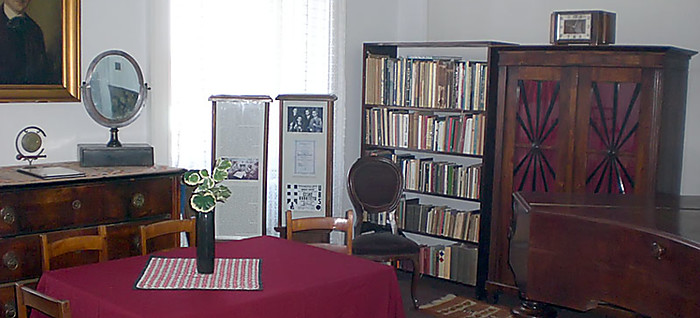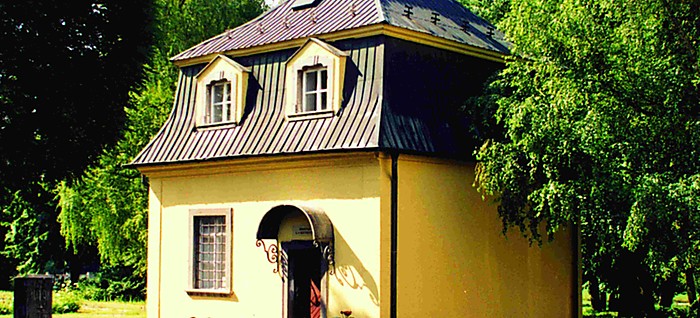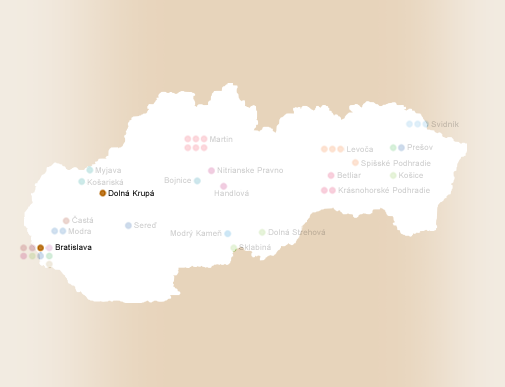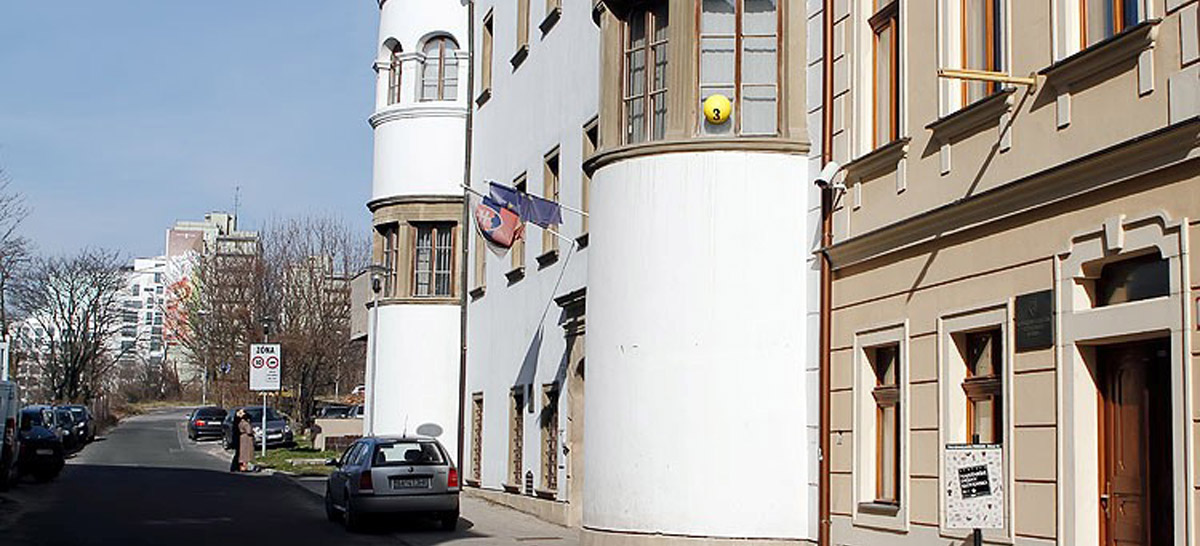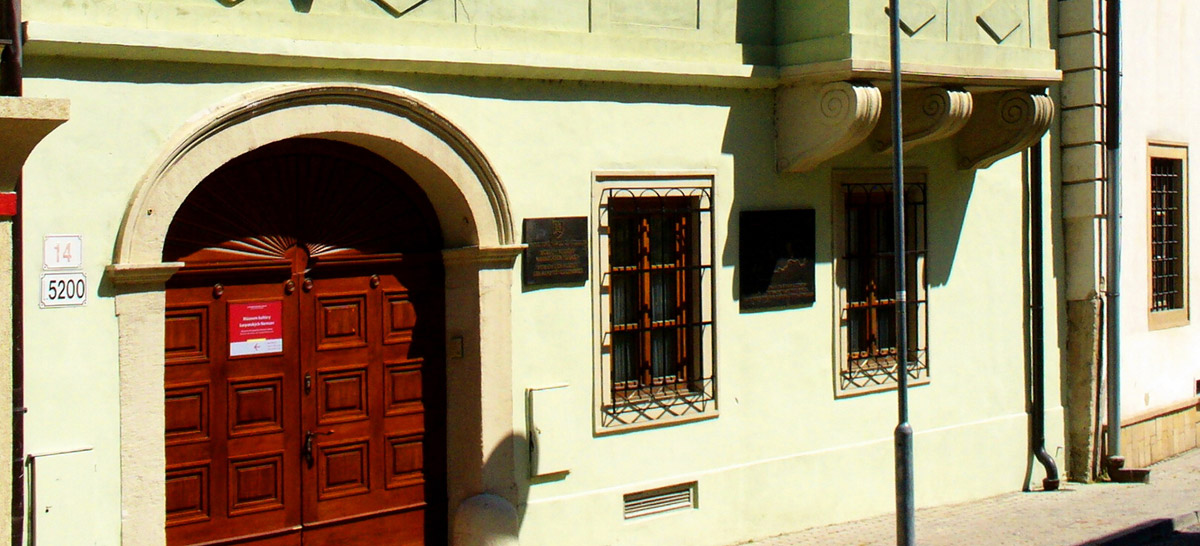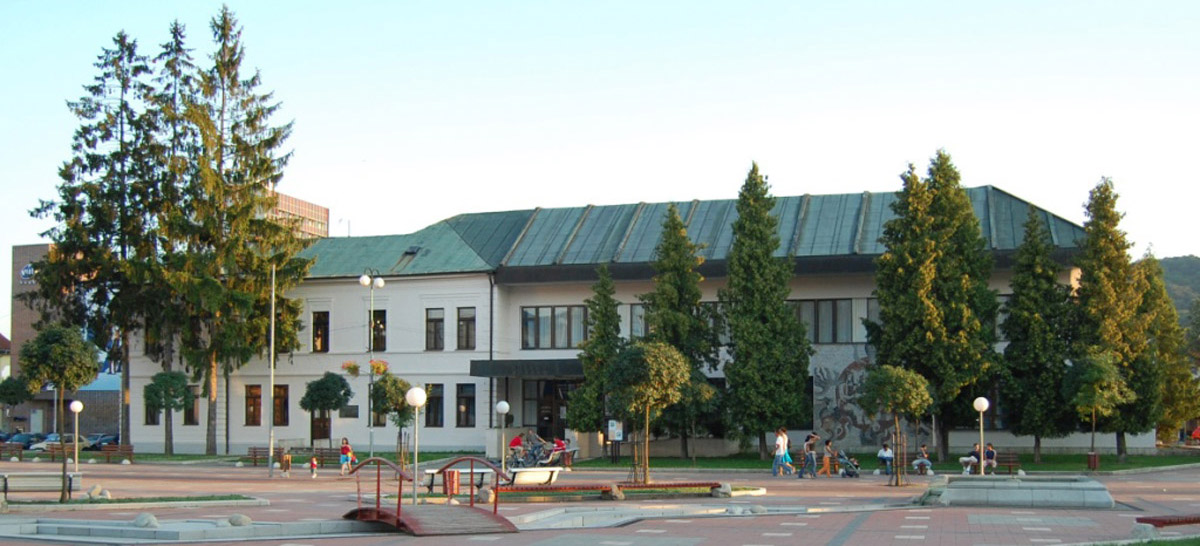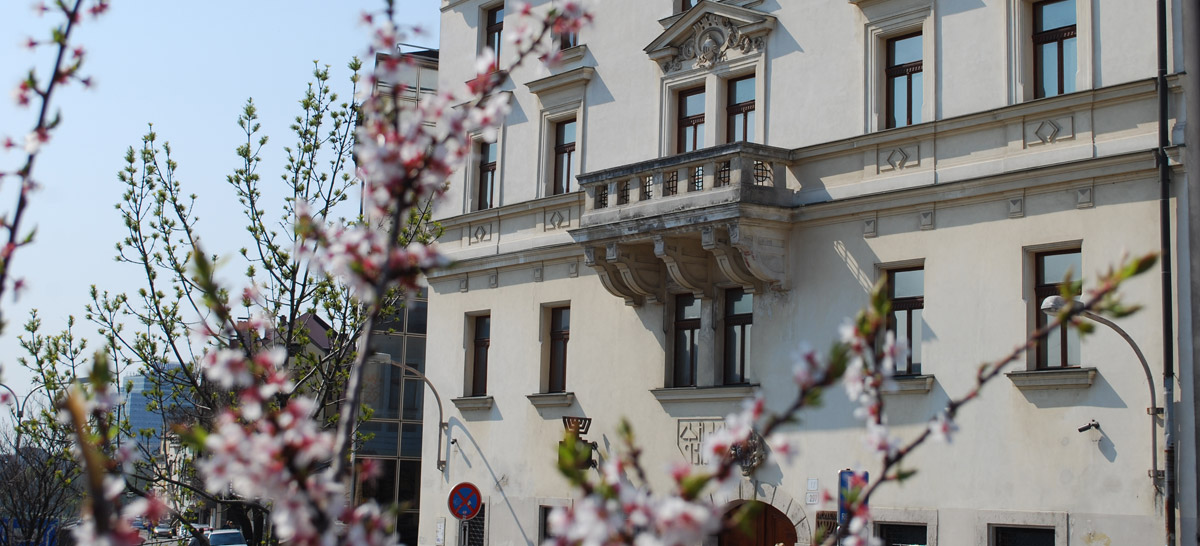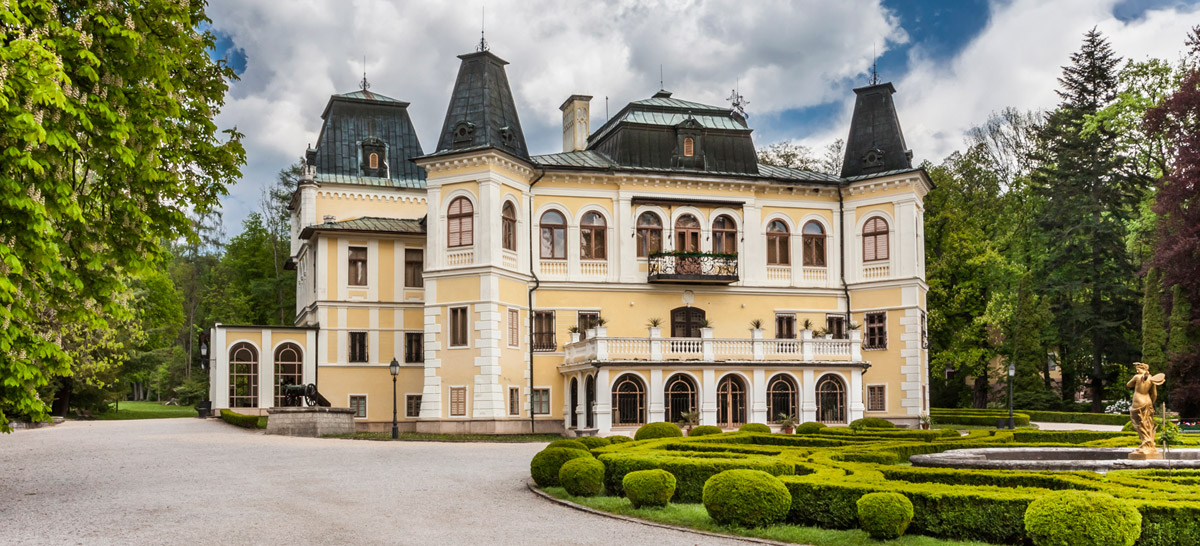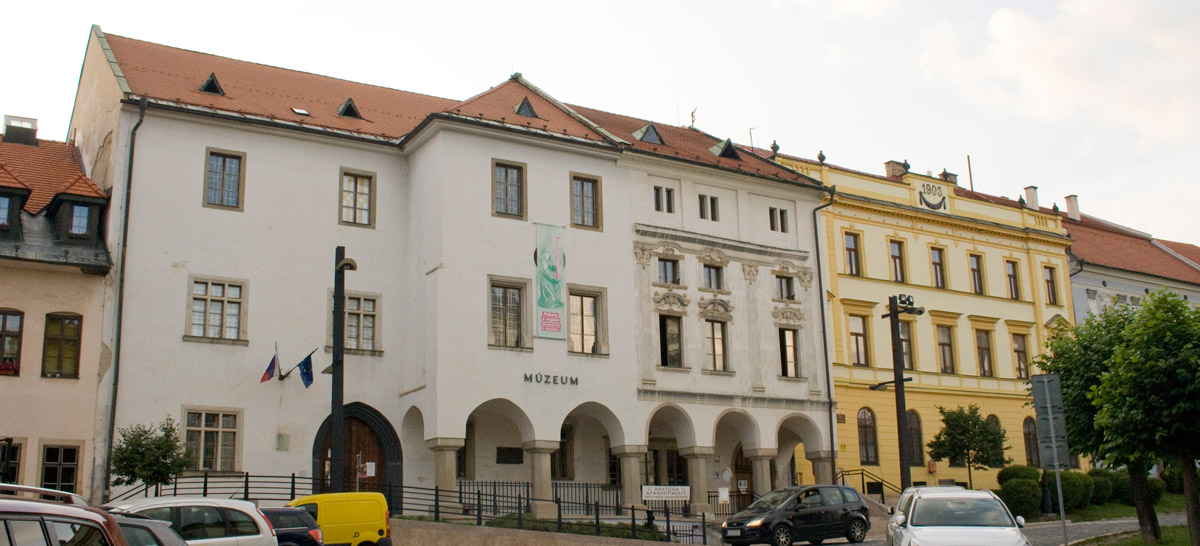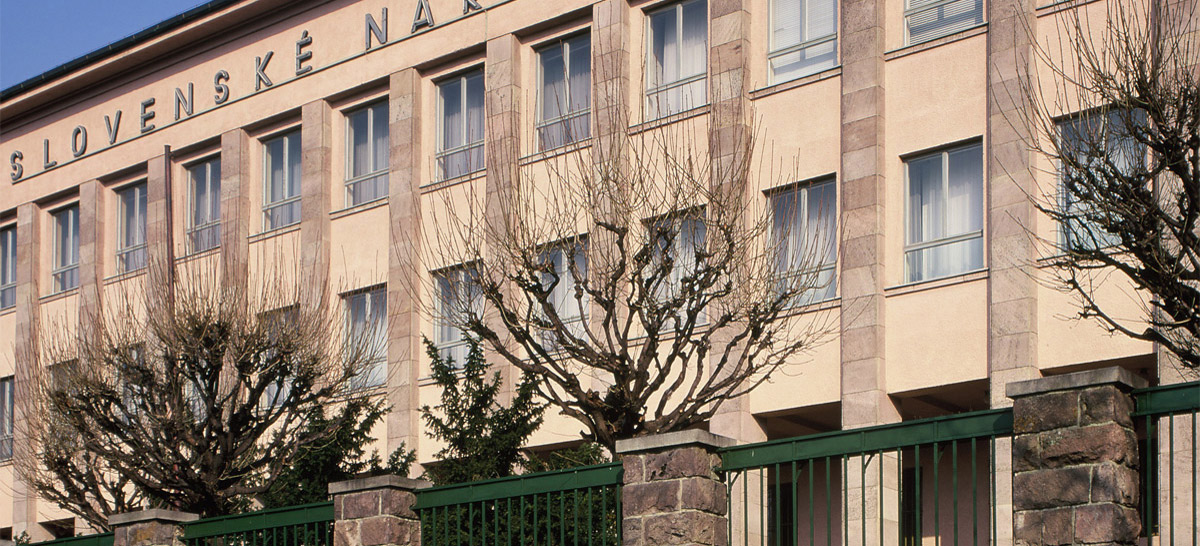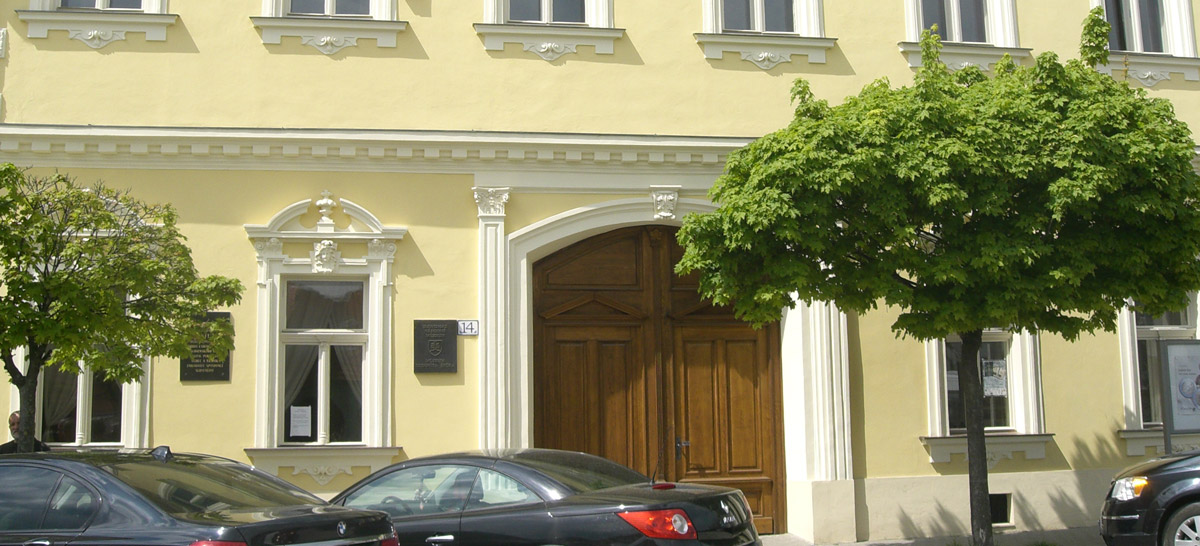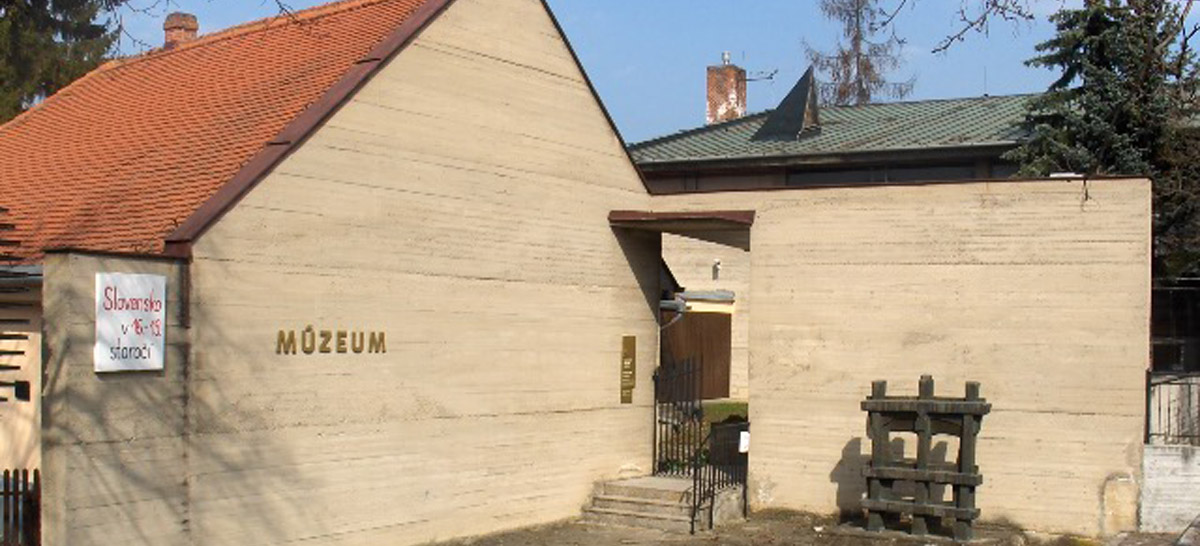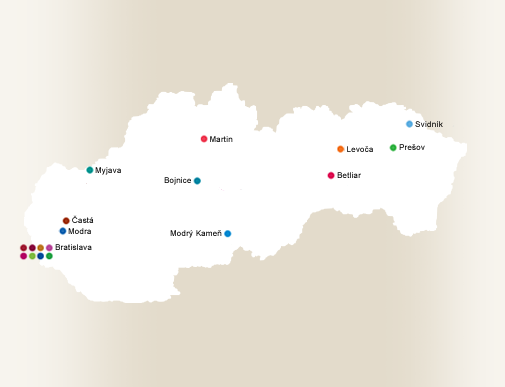Precious stones from the Museum. How music is collected
from 15. 12. 2017 to 28. 1. 2019

The exhibition Precious sTONES from the Museum represents the diversity of items from the collections of the Slovak National Museum (SNM)-Music Museum. This is not an exhibition about the history of music in Slovakia, it just draws attention to the Museum's material riches, their significance for research into music history and how they can help combat amnesia. In this way, "amassed" music is a source of information and instruction, and entertainment too.
The SNM-Music Museum is responsible for more than 134,000 items in the collections, which tell a story about music and musical life in various periods of history, with an emphasis on links to Slovakia. The structure of the Museum's collections is heterogeneous: music on paper (both sheet music and manuscripts), items of an archival nature, instruments, sound recordings, iconographic collections, and objects that were useful or personal to, or commemorative of, personalities or institutions in the context of music or reproduction equipment.
The collection of musical items from the past became a focus of the musicology department in the Comenius Unversity's Philosophical Faculty (FF UK) in 1921, and later (from 1943) the Slovak Academy of Sciences' Institute of Musical Science. In the SNM the inception of musical museology dates from the mid-20th century. An independent department was created in 1965 and a specialized Music Museum within the SNM marked its silver jubilee in 2016.
Among the most extensive of the Museum's acquisitions is the legacy of the notable Bratislava family of composer, conductor and teacher Alexander Albrecht (1885–1958) and his son, the musicologist Ján Albrecht (1919–96). The family had an intimate connection with a European tradition: the cultivation of chamber music – DOMESTIC PROMOTION OF CHAMBER MUSIC. This practice was related to the fact that MUSIC NEEDS TO BE LEARNED. The history of musical education and training is documented by several relics of varied provenance from the 17th century to the 20th, and sources linked to the formation of a specialist music education system in Slovakia after 1918: the Music School for Slovakia (1919), the forerunner of the Conservatory, the musicology department of the FF UK (1921) and the Academy of Performing Arts (1949).
Musical history is also documented in the personal collections of composers. From the generation with a modern orientation that founded Slovak national music there are Alexander Moyzes (1906–84) and Eugen Suchoň (1908–93). The figure of Ján Cikker (1911–89) is present in the collection of Štefan Hoza (1906–82). From the generation of A. Moyzes's pupils, the Museum has the papers of Dezider Kardoš (1914–91), Ladislav Holoubek (1913–94) and Tibor Frešo (1918–87). From an older compositional generation, the Museum administers the legacies of Mikuláš Moyzes (1872–1944) and Štefan Németh-Šamorínsky (1896–1975), with individual sources relating to the work of Mikuláš Schneider-Trnavský (1881–1958), Viliam Figuš-Bystrý (1875–1937) and Ladislav Stanček (1898–1979). The inheritance from the notable composer Ján Levoslav Bella (1843–1936) was among the first acquisitions of more recent musical history, handed over from the FF UK's musicology department.
EARLY MUSIC relics document the development of music culture up to the 19th century and confirm that the majority of art music in Europe was created for the Christian liturgy. The oldest items, from the 13th century, were created by scribes in their workplaces and may be characterized by the Benedictine watchword ORA ET LABORA (pray and work). They were responsible for the graphic deposition of Gregorian chant – mediaeval worship sung in unison in Latin. The material is heterogeneous: fragments, book pages, whole books or volumes. St Augustine's statement HE WHO SINGS PRAYS TWICE expresses how popular hymnody made its way into the liturgy. The cultural and historical phenomenon of a hymnal culture developed and is represented in the Museum's collections by items of varied provenance and origin, as much in manuscript as in printed form. Nowadays, alongside traditional hymns, churches also resound with NEW HYMNS. For the Orthodox churches it is valid to say: WITHOUT MUSIC THERE IS NO LITURGY, WITHOUT LITURGY THERE IS NO MUSIC. The musical liturgical books in the Museum include irmologia belonging to the domestic Rusyn-Slovak liturgical tradition.
Centuries of evolution in putting musical notation on paper brought a spectrum of notational systems. After unlined neumes, mensural notation - MUSICA MENSURATA - stood early music (circa 13th-17th centuries) in good stead as a standard system of musical notation, above all in the tradition of vocal polyphony, because it determined precisely (proportionally in numerical terms) measured rhythmic note durations. In Renaissance and baroque notational systems, the means of expressing instrumental music was TABULATURE (illustrating the fingering and using characters instead of notes) for instruments that were plucked or had keys.
MUSIC IN PARISH CHURCHES covers a repertoire from hymns, via demanding figural church music, up to secular symphonies, which the Museum holds in collections from Slovak choir lofts. Equally resonant, there was MUSIC IN CLOISTERS; the Museum has deposited in it, for instance, a noteworthy assemblage of sheet music from Bratislava's Ursuline nuns.
Secular MUSIC IN ARISTOCRATIC RESIDENCES, above all from the mid-18th century, was cultivated by the nobility by way of domestic music-making and supporting paid musicians and bands; the repertoire consisted of an amalgamation of pan-European art music with a varied pool of folk songs and dances from Slovakia and neighbouring countries. A fair amount of secular music comes from the collection at the Adamovský manor house, where there was a concentration of confiscated aristocratic and church property in the 1950s, and the music collections from church choirs. In the 19th century Europe saw the spread of a move towards associations aimed at augmenting singing and music in churches. One of these was THE CHURCH MUSIC SOCIETY OF ST MARTIN'S CATHEDRAL IN BRATISLAVA, from its inception in 1833 until the 1920s the most important music institution in what is now Slovakia. The Society had a hand too in presenting the work of the composer FRANZ LISZT.
There is a wide range of material in the Museum that documents 20th-century concert life, above all in many artists' personal legacies. It is interpreters who are the animators of and vessels for musical experiences, it is through them that MUSIC APPROACHES THE LISTENER AND THE LISTENER THE MUSIC. Along with integral collections the Museum has a miscellany of documentation about Slovak musical and cultural life in the 20th century taking place ON CONCERT PODIUMS.
From the 1920s music also got to the listener by new means, or media; Bratislava's branch of the Czechoslovak company RADIOJURNAL began broadcasting in 1926. One of its components became the radio orchestra, which led on in 1949 to the creation of the professional SLOVAK PHILHARMONIC. A new chapter in the development of theatrical culture in Slovakia was started in 1920 when SND OPERA gave its first operatic performance (Smetana's Hubička, "The Kiss"). Folk traditions and THE EARTH BURSTING INTO SONG enthused Czech folklorist Karel Plicka; in 1933 he shot the first full-length Slovak film with a soundtrack, Zem spieva (The Earth Sings). From the 1830s on, FOLK SONGS were the object of multifarious arrangements and artistic reshapings, giving rise to the decision to establish a professional ensemble, THE SLOVAK STATE TRADITIONAL DANCE COMPANY (1949).
Away from the riches of its archives, the Museum administers a valuable collection of ART MUSIC INSTRUMENTS, which ranks among the biggest collections of this type in central Europe. A big part of it is made up of a systematically built-up assembly of folk instruments, on which was played MUSIC BY EAR AND IN ACCORDANCE WITH TRADITION. Recent acquisitions include a legacy that is worthy of attention from jazzman Jozef "Dodo" Šošoka, his instruments from outside Europe pointing towards UNTRADITIONAL TRADITIONS.
To a lesser extent, sources linked to POPULAR MUSIC are represented in the archives, with SLOVAK TANGO dominating. The large SOUND ARCHIVES take their place in the Museum's collections too – from the first "digital" recordings for mechanical instruments, via phonographic cylinders and shellac or vinyl discs, to digital media.

